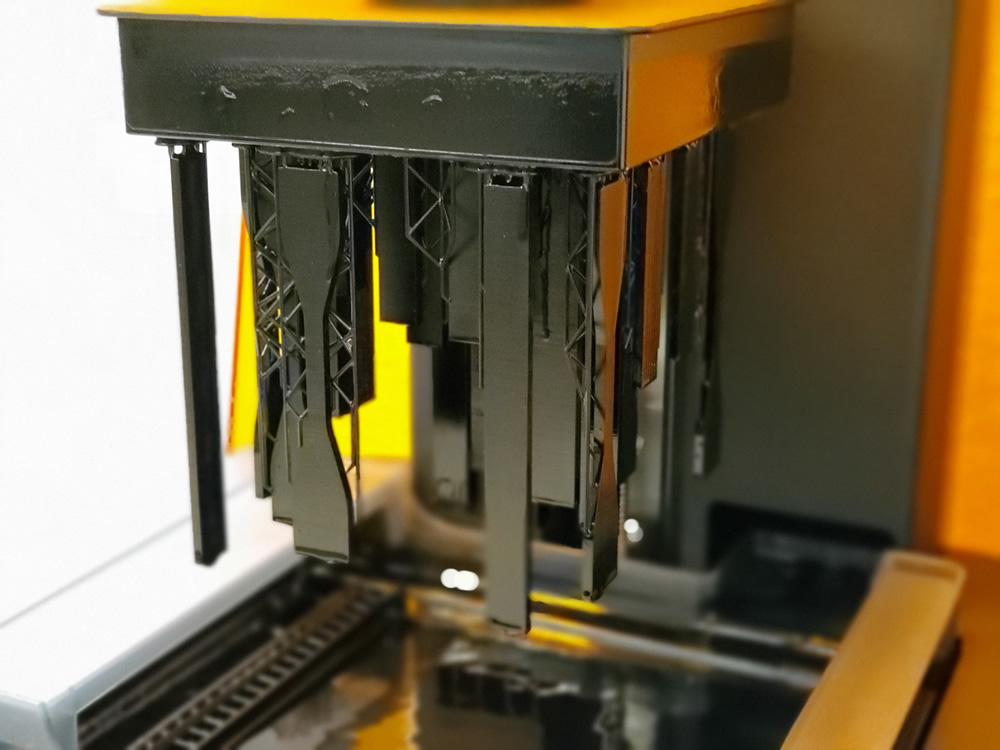Arizona-based 3D printing start-up Mechnano has created a novel high-temperature, rigid electrostatic discharge (ESD) material in collaboration with ceramic additive manufacturing materials provider Tethon3D.
The 3D printable resin was created to address the challenge of creating custom nano-uniform ESD parts which can endure multiple cycles of a high-temperature wave soldering process (245°C) employing Mechnano’s proprietary carbon nanotube technology (CNT); MechT, which helps dissipate static.
When manufactured, the CNTs get clumped together into balls of millions or billions of tubes. When added to materials, these clumps are inefficient and unable to harness the benefits of nano-materials. Separating CNTs is tricky, as they re-clump, i.e., agglomerate, once added to a material. After over a decade of research and development, Mechnano claims its proprietary technology detangles and isolates CNTs into discrete tubes. The resulting CNTs are capable of delivering previously untapped properties. Mechnano accomplishes this by introducing molecules into the sidewalls that enhance material properties and molecules into the tubes that add properties.
The new resin, C-Lite, can be 3D printed with a wide range of vat photopolymerization systems, including LCD, DLP, and SLA, enabling ‘quick-turn’ part fabrication with ‘ultra-high accuracy’. Dane Yoner, Trilogy Director of Business Development, explained that Mechnano-enhanced materials like C-Lite for reflow fixtures and other tooling will help the firm reduce its cycle times. “Our customers will experience ultra-quick turn products and we can increase our market share,” added Yoner.

The motivation behind launching this new material
Testing of C-Lite has been conducted on several applications, including a custom carrier. Electronics manufacturing company Trilogy-Net ran the component through the standard reflow ovens and Vapor Phase, reporting no variations in dimensions or flatness throughout a single cycle. Mechnano claims that Trilogy-Net verified the lack of shrinkage, cracking, softening, or warping after the component went through the reflow oven 50 times.
Mechnano claims that additive manufacturing will enable the electronics industry to respond to client queries more quickly, like fabricating ESD parts to assist the reflow process. Consumers frequently demand custom carriers/pallets to retain printed wiring compositions throughout the reflow process, so the firm stresses the importance of agility for customer-specific applications that necessitate a range of non-standard parts for small production runs.
According to Mechnano, manufacturing such parts using conventional manufacturing techniques might slow down production and raise costs because the conventional materials loaded with carbon fiber in the parts “do not preserve today’s electronics”.

Impact of resin 3D printing on the additive manufacturing sector
Previously, glass, electronics, chemicals, and ceramics manufacturer AGC Inc. created a biocompatible non-cytotoxic urethane acrylate oligomer that can be 3D printed into ultra-realistic patient-specific organ models. AGC Inc. created a material with a low storage modulus without the need for plasticizers including its new oligomer. As a result, ‘U-FINE LD-301’ can serve as the foundation for non-cytotoxic stereolithography (SLA) or Digital Light Processing (DLP) 3D printing resins which are less prone to dimensional bleeding or instability. In practice, the company anticipates that the medical community will implement its flexible new material as a method of 3D printing extremely lifelike, patient-specific anatomical models with broad clinical training applications.
Elsewhere, US-based ultrafast polymer 3D printing solutions provider Nexa3D released an ESD-safe resin for manufacturing static-dissipative components using Mechnano’s MechT technology. According to the company, Mechnano’s technology is assisted by over a decade of development and research, as well as 120+ issued and pending patents. The novel Nexa3D xESD provides fundamental static-dissipative performance along with isotropic mechanical characteristics that are critical in the electronics manufacturing industry. According to Nexa3D, the material can also be employed when managing critical electrical parts on the production floor.
According to Nexa3D, the xESD meets the demand for rapid manufacturing and prototyping by allowing users to rapidly develop different fixtures, grippers, assembly aids, and enclosures without fear of ESD damaging expensive electrical parts. Carbon nanotubes that have been detangled and separated can be spread throughout an additive manufacturing material without re-clumping using MechT technology. Aside from ESD, the produced separate tubes can be created to fit specific performance needs and offer previously unattainable performance, such as a 50% rise in tensile strength, a 200% rise in toughness, and an 850% rise in tear resistance.
What does the future of 3D printing for the next ten years hold?
What engineering challenges will need to be tackled in the additive manufacturing sector in the coming decade?
To stay up to date with the latest 3D printing news, don’t forget to subscribe to the 3D Printing Industry newsletter or follow us on Twitter, or like our page on Facebook.
While you’re here, why not subscribe to our Youtube channel? Featuring discussion, debriefs, video shorts, and webinar replays.
Are you looking for a job in the additive manufacturing industry? Visit 3D Printing Jobs for a selection of roles in the industry.
Featured image shows the Reflow test part. Image via Mechnano.



